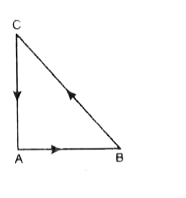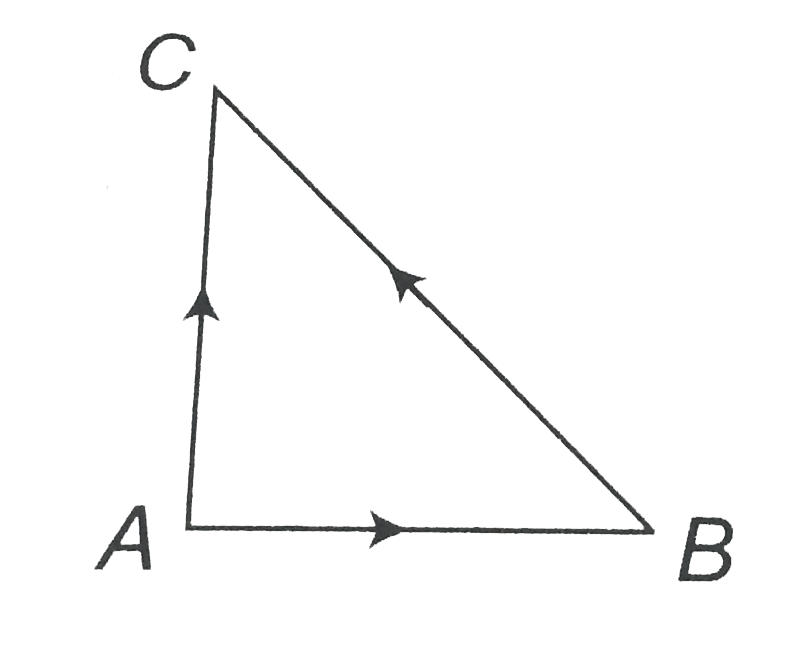Three forces start acting simultaneously on a particle moving with velocity →v. These forces are represented in magnitude and direction by the three sides of a triangle ABC (as shown).
 The particle will now move with velocity :Solution in Punjabi
The particle will now move with velocity :Solution in Punjabi
less than →v
greater than →v
|→v| in the direction of largest force BC
→v remaining unchanged
Step by step video & image solution for Three forces start acting simultaneously on a particle moving with velocity vecv. These forces are represented in magnitude and direction by the three sides of a triangle ABC (as shown). The particle will now move with velocity : by Physics experts to help you in doubts & scoring excellent marks in Class 11 exams.
Updated on:21/07/2023Topper's Solved these Questions
Similar Questions
What is centre of mass of a system?
View SolutionA bend in a level road has radius of 100 m.Find the maximum speed with which a car turning this bend may have without skidding ,if the coefficient of friction between the tyres and road is 0.8.
View SolutionThree forces start acting simultaneously on a particle moving with velocity, ¯v. These forces are respresented in magnitude and direction by the three sides of a triangle ABC. The particle will now move with velocity

View SolutionA particle moving with velocity vecV is acted by the three forces shown by the vector triangle PQR. The velocity of the particle will :
View SolutionThree forces start acting simultaneously on a particle moving the velocity →V. The forces are represented in magnitude and direction by the three sides of a triangle ABC (as shown). The particle will now move with velocity

View SolutionThree forces start acting simultaneously on a particle moving with velocity, ¯v. These forces are respresented in magnitude and direction by the three sides of a triangle ABC. The particle will now move with velocity

View Solutionतीन बल →v वेग से चलने वाले कण पर एक साथ कार्य करते हैं । इन बलों के परिमाण और दिशा को त्रिभुज ABC की भुजाओं द्वारा दर्शाया जाता है । कण a का नया वेग होगा -

View Solution"if the magnitudes and direction of three forces acting on a particle are represented by three sides of a triangle taken in order, the particle remains in equilibrium" state whether the statement is true or false ?
View SolutionThree forces start acting simultaneously on a particle , moving with velocity, →v . These forces are represented in magnitude and direction by the three sides of a triangle ABC (as shown). The particle will now move with velocity

View Solutionसदिश त्रिभुज PQR में दर्शाए अनुसार वेग →V से गतिमान किसी कण पर तीन बल कार्य कर रहे हैं इस कण का वेग

View SolutionThree forcesstart acting simultaneously on a particle moving with a velocity →v . These forces are represented in magnitude and direction by three sides of a triangle taken in the same order. What now will be the velocity of the particle ?
View SolutionThree forces start acting simultaneously on a particle moving with velocity →v. These forces are represented in magnitude and direction by the three sides os a triangle ABC (as shown). The particle will now move with velocity.

View SolutionA particle moving with velocity →V is acted by the three forces shown by the vector triangle PQR. The velocity of the particle will :

View SolutionThree forces start acting simultaneously on a particle moving with velocity, →v. These forces are respresented in magnitude and direction by the three sides of a triangle ABC. The particle will now move with velocity

View SolutionThree forces start acting simultaneously on a particle moving with velocity →v. These forces are represented in magnitude and direction by the three sides os a triangle ABC (as shown). The particle will now move with velocity.

View SolutionA particle moving with velocity →V is acted by the three forces shown by the vector triangle PQR. The velocity of the particle will :

View Solution
